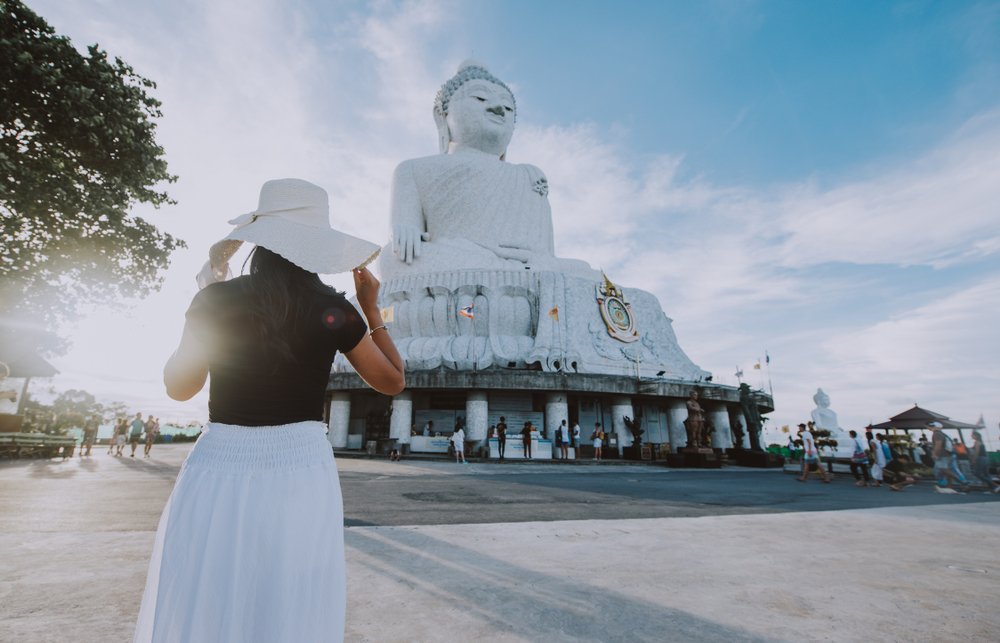When you think of Phuket, you imagine pristine beaches, lush landscapes, and the majestic Big Buddha in Phuket gazing over the island from Nakkerd Hill. This iconic landmark is not just a testament to religious devotion but also a must-visit for anyone exploring Phuket. Let’s embark on a journey to uncover everything you need to know about visiting the Big Buddha, making your trip an unforgettable one.
Getting to Know the Big Buddha
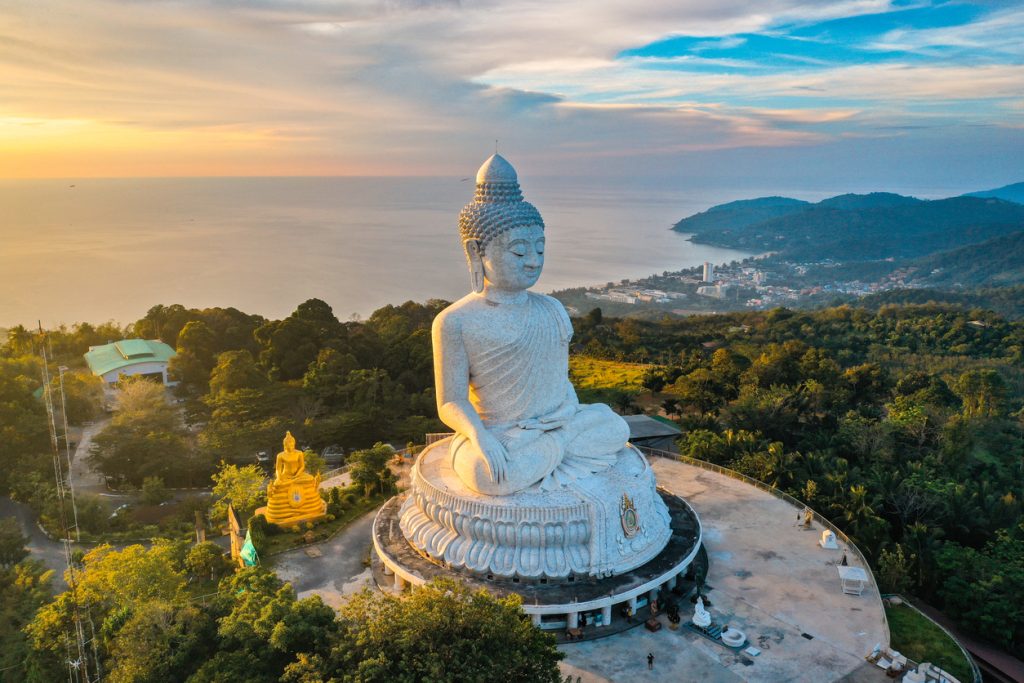
History and Significance
The story of the Big Buddha begins with a grand vision for a landmark that would not only serve as a beacon of hope and peace for the people of Phuket but also as a symbol of welcome to visitors from around the globe. This vision came to life in 2004, marking the beginning of what would become one of Thailand’s most iconic religious sites.
The Big Buddha project was initiated as a symbol of faith and a testament to the strength of the human spirit in overcoming challenges. Situated on Nakkerd Hill, the site was chosen for its serene beauty and its prominence, allowing the Buddha to be seen from many points across the island. The project was funded by donations from locals and international visitors alike, showcasing a remarkable collective effort to bring this monumental symbol to life.
Architectural Marvel
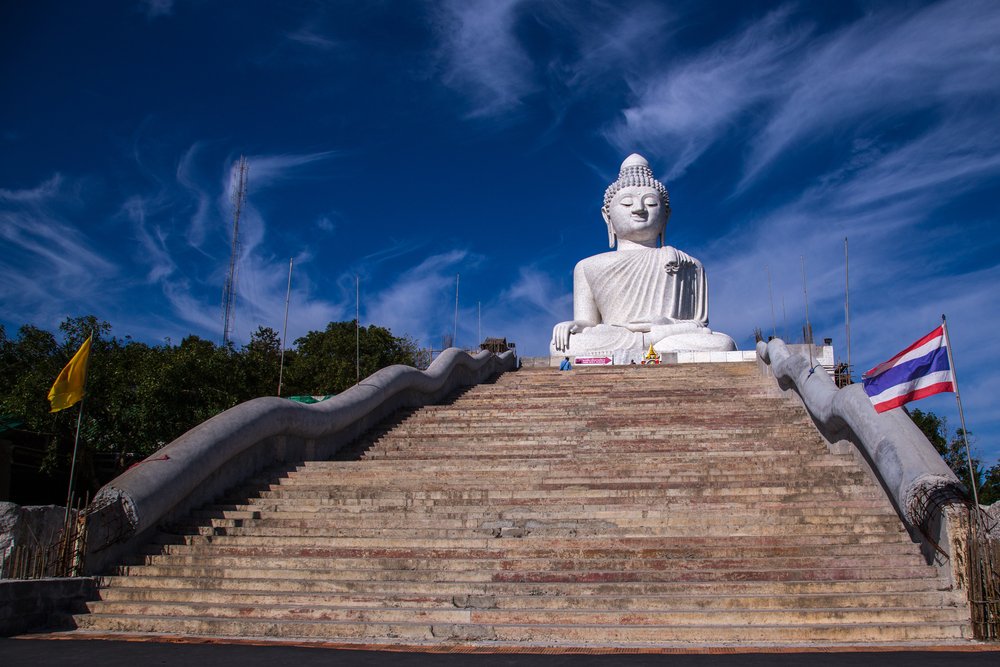
Standing at an impressive 45 meters tall and draped in white Burmese marble, the Big Buddha is not only a spiritual beacon but also a marvel of modern engineering and traditional craftsmanship. The choice of white marble was deliberate, symbolizing purity and peace, while its towering presence is meant to inspire awe and spiritual reflection.
The construction of such a colossal statue posed significant engineering challenges, from ensuring its stability on the hilltop to the delicate task of adorning its surface with thousands of marble tiles. Each tile and every contour of the Buddha was meticulously crafted by skilled artisans, contributing to the statue’s breathtaking detail and presence.
The Big Buddha’s serene expression and majestic posture, with one hand raised in a gesture of dispelling fear, convey a powerful message of protection and peace to all who visit. This architectural masterpiece not only dominates the skyline but also stands as a testament to the collaborative spirit and dedication of the many individuals who contributed to its creation.
Through its history and architectural grandeur, the Big Buddha offers visitors a glimpse into the heart of Thai culture and spirituality, making it an essential experience for anyone visiting Phuket.
Planning Your Visit of the Big Buddha in Phuket
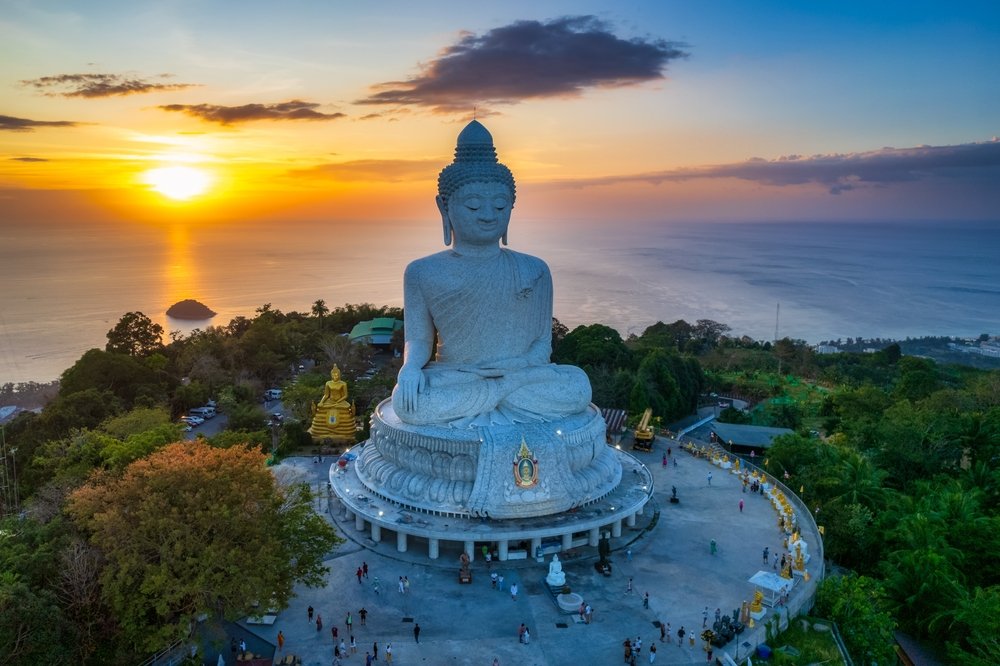
Visiting the Big Buddha is a remarkable experience, one that is enhanced by choosing the right time for your visit. While the time of day is important, with early morning or late afternoon offering cooler temperatures and softer light for photography, selecting the best month to visit can also significantly enhance your experience.
Phuket, like much of Thailand, experiences a tropical climate with three main seasons: the hot season, the rainy season, and the cool season. To make the most of your visit to the Big Buddha, the best months are from November to February, during Phuket’s cool season. During these months, the weather is at its most pleasant, with average temperatures ranging from 23°C to 30°C (73°F to 86°F), making outdoor activities like climbing up to the Big Buddha more comfortable.
These months also coincide with the peak tourist season, thanks to the ideal weather conditions, so while you might encounter more visitors, the experience of seeing the Big Buddha against the backdrop of clear blue skies and cooler breezes is truly unparalleled. Morning visits during these months are particularly magical, as the rising sun bathes the statue and surrounding landscape in a warm, golden light, offering a serene and almost ethereal atmosphere.
Dress Code and Etiquette
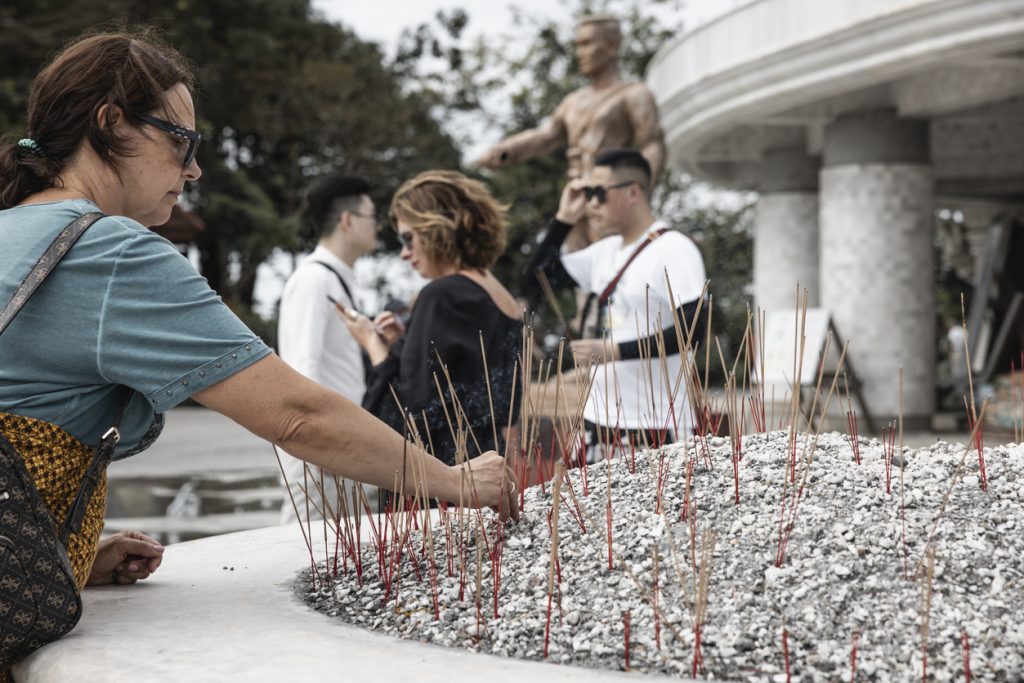
When visiting the Big Buddha in Phuket, it’s essential to remember that you’re entering a site of significant religious importance. To show respect for the local culture and spiritual practices, visitors are asked to adhere to a modest dress code and observe certain etiquette guidelines.
Dress Code: The key principle is modesty. Both men and women should wear clothing that covers shoulders and knees. This means avoiding sleeveless tops, short skirts, shorts, and beachwear. If you find yourself at the site without appropriate attire, don’t worry – there are often sarongs and cover-ups available for loan or purchase at the entrance.
Etiquette: Beyond dressing respectfully, visitors should also:
- Speak softly and maintain a peaceful environment.
- Remove shoes before entering any temple structures or designated areas around the Big Buddha.
- Avoid pointing feet towards the Buddha statue or any other sacred object, as feet are considered the lowest and dirtiest part of the body in Thai culture.
- Refrain from public displays of affection, which are considered disrespectful in a sacred place.
Conclusion
The Big Buddha in Phuket stands as a beacon of peace, culture, and architectural marvel, inviting visitors from all corners of the globe to experience its serenity and beauty firsthand. Whether you’re drawn to its spiritual significance, the panoramic views it offers, or simply the chance to explore one of Thailand’s most iconic landmarks, a visit to the Big Buddha is an enriching experience that transcends the ordinary. And what better way to embark on this journey than with Bangkok Airways, Thailand’s boutique airline, offering convenient and comfortable flights to Phuket from various locations. Let Bangkok Airways be your gateway to the mesmerizing beauty of Phuket and its towering guardian, the Big Buddha. Book your flight today and prepare to be uplifted in more ways than one.


